1987 Arcadia Systems / Domark
Platform: Arcade and Commodore Amiga
Following on from our recent post about the arcade version of Fire and Forget 2, comes yet another title that was being developed simultaneously whilst the home conversions were under way. With The Living Daylights, it would have essentially been the Amiga game that users would have seen – well, had the Amiga version been released that is.
Arcadia Systems was set up by Mastertronic to try and break into the arcade market, and their business model was to essentially put an Amiga PCB with a game burned onto EPROMS, making for much more efficient development and a far easier way for arcade owners to swap games around. The plan would be for the home computer version to be made available 90 days after the arcade release.
The model didn’t quite work out though, with just a handful of titles released such as Aaargh! and Road Wars that performed badly. The failure is likely to have been the reason that the planned arcade release of The Living Daylights was later shelved, though I’m sure the eventual poor game design that saw release elsewhere wouldn’t have helped much either.
So how far did the Arcade/Amiga edition get? This we’re not too sure at present, though C&VG were seemingly confident, offering the chance to win the actual arcade – probably without ever seeing any evidence that something even existed.
However, what is strange is that although all the other home conversions saw release – the Amiga release wasn’t pushed out. It suggests that the issue with the arcade’s non-appearance could have been down to issues with the development itself, rather than the failure of the company model.
As of yet, it isn’t known as of yet who was behind the development. Could it have perhaps been someone behind another Amiga Arcadia title? Due to the variety of developers across those games, it is most likely going to have been someone completely different. However, contributor mt256 has found that the designer was listed as Richard Naylor, so its hoped they might know more.
mt256 revealed that Richard Naylor had said in CVG issue 68 a lot about plans for the game as a whole. Richard was the designer, and then two different teams would be working on the home computer and arcade versions. Richard believed that it was probably the first time that an arcade and computer game had been designed at the same time.
Originally it was revealed that an American team did the design for the game, and it was quite a lot like View to a Kill, with about 3 different scenes. This was scrapped in favour of a new design from Richard, which aimed to do the game and then tie into the film instead of the other way around.
The arcade was revealed in the CVG article as being done by Arcadia and produced in America, who would also do the Commodore Amiga version – so using the same code-base. Sculptured Software would do both the unreleased ST version and the C64 edition that was released.
If you know anything more, please do get in touch. Watch out for another arcade themed post coming soon.
With thanks to Ross Sillifant for flagging up the title and mt256 for credit contributions.
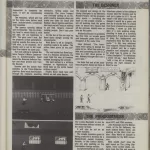
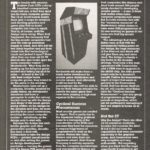


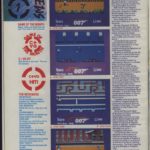
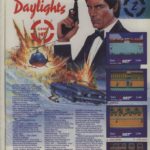
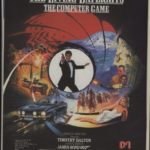
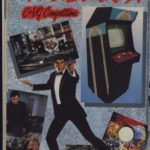


A bit of info from the words of designer Richard Naylor:
-A team from america Arcadia (Canada?,United States?), is doing the arcade/amiga version from R.Naylor design.
-Sculptured software worked in both (unreleased) Atari ST and the released Commodore 64.
https://spectrumcomputing.co.uk/page.php?issue_id=1519&page=79
Thanks very much Frank!
Apparently each Arcadia game was designed to use 1mb but I think the system its self is nothing more than standard off the shelf Amiga parts.
From what I could gather from Anthony Guter and several of the devs who worked on different versions of Road Wars, the design kept changing mid development.
The Arcadia version released definitely came out AFTER the home versions.
That would explain the massive graphical and gameplay overhaul found in the Arcadia version compared to any home version (which all generally follow the Amiga version with a few tweaks or omissions here and there).
I know Road Wars is usually never spoken about, but it’s the most interesting of the Arcadia collection to me because of how radically different the arcade and Amiga versions are and how that flies completely in the face of what the original design intention was.
An interesting piece of history regardless.
I’ve always been very interested in the Arcadia System. As an obscure and failed hardware it holds tons of mystery for me.
However, I always felt the whole project was a little…off?
There’s loads of discrepancies in which games were released (and when).
Some like Road Wars had an early version looking identical to the actual released Amiga version but the game I’ve played is a near complete design change or even remake.
Some games have been heavily reworked for the their Arcadia editions like Ninja Mission and Aaargh!!
If the whole focus was to create fully fledged arcade games that could run IDENTICALLY on a home Amiga 500, then the project failed miserably.
Apparently Rockford is very different as well but has yet to be discovered…
Still a curious and fun footnote in arcade gaming history and I’m happy to own a set.
I’d advise anyone interested to definitely try out Road Wars (in 2 player), it’s silly shooter fun when no money is involved ;)
That is very interesting. Was the hardware enhanced at all for the Arcadia System do you know Glenn? Perhaps that might explain why there were heavily reworked versions that couldn’t then run on a stock Amiga. Might be that was their intention, but they found they had to enhance the hardware to improve the quality of the games in the arcade. Certainly one that requires more digging.
Thanks for the tip on Road Wars too :)
More few references to an arcade release by Arcadia in summer 1987, supposedly game designed by Richard Naylor, really this name is in the commodore64 version as designer:
https://www.mi6-hq.com/sections/games/tld
https://www.mobygames.com/game/c64/james-bond-007-in-the-living-daylights-the-computer-game/adblurbs
Thanks mt237! I think Richard’s connection is a good lead to chase on, as they may well know more about the arcade and what happened as the designer of the game as a whole.
Joe Hitchens (Graphics also Magic Johnson’s Basketball). Magic Johnson’s Basketball, Leader Board, match coder: Craig Conder.
sorry i missed Sculptured Software are alo behind Arcadia/Amiga Magic Johnson’s Basketball and Leader Board.
Not mentioned in article but it’s clearly developer Sculptured Software are behind this, also responsable of other arcadia system/amiga titles (Arrrghh! and Ninja), and also the commodore64 Living Daylights version.
The Arcadia/Amiga versions or Aarghhh! and Ninja (according to lemonamiga.com source) matchups two persons: Steve Coleman (Coder) and Joe Hitchens (Graphics).
Not necessarily, as Arcadia Systems had different development teams for their games. But chances are you are correct.
As a result, we suggest at the end of the article that it could well have been someone who worked on another Amiga Arcadia title (and then link to Lemon Amiga and their Arcadia tagged titles). Potential developers include Sculptured Software, Icon Design, Synergistic Software, Zippo Games etc.
we can confirm after seeing four numbers following this issue, what C&VG never was show any name/photo winner of anything…
Hi mt237, yeah – looks like this competition never got announced due to the development falling through.
No, if you see any others C&VG magazine issues around that time a lot of raffles was announced but they never show the winners names or ohotos.
Ah that’s a bit rubbish of them. I know some of the other magazines did a similar thing or forgot to report it.
Unfortunately i’ve tried to know the winner name to track and ask him directly.